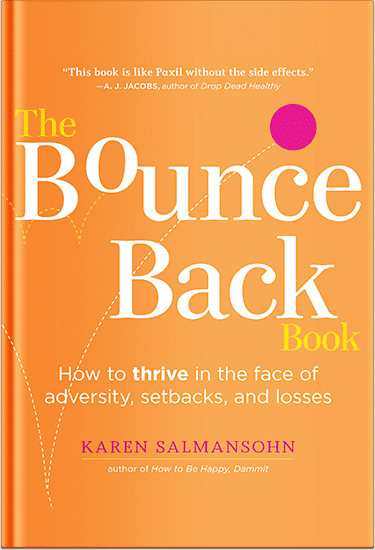 Read on if you want to understand the top responsibilities and roles of a medical secretary and learn how to join the field.
Read on if you want to understand the top responsibilities and roles of a medical secretary and learn how to join the field.
In the complex and dynamic world of healthcare, the role of a medical secretary is often overlooked but undeniably crucial. These professionals serve as the administrative backbone of medical practices and facilities. They make sure that everything runs smoothly.
In this article, I’ll help you to explore the top roles and responsibilities of a medical secretary. Plus I will share insights into how to join the field.
I’m writing this article because I’m a multi-bestselling entrepreneur, with about 2 million books and courses sold globally.
I love to help people to find their dream jobs – which bring both money and fulfillment.
The Role of a Medical Secretary
Medical secretaries play a multifaceted role that bridges the gap between healthcare providers, patients, and administrative tasks.
Here’s a glimpse into their key roles:
1. Patient Interaction
Medical secretaries are often the first point of contact for patients. They schedule appointments, answer inquiries, and ensure patients feel welcome and cared for.
2. Administrative Support
They manage medical records, handle billing and insurance claims, and maintain organized filing systems. Accuracy and attention to detail are paramount in these tasks.
3. Appointment Coordination
Coordinating appointments and managing the physician’s schedule is a vital aspect of their job. They must ensure that appointments are efficiently scheduled to minimize wait times for patients.
4. Communication
Medical secretaries facilitate communication between patients and healthcare providers. They relay important messages and assist in ensuring a seamless flow of information within the healthcare team.
5. Billing and Coding
They handle medical billing and coding tasks, ensuring that services are accurately documented and billed to insurance providers.
6. Compliance
Staying up-to-date with healthcare regulations and maintaining patient confidentiality are fundamental aspects of their role.
7. Technology Proficiency
Proficiency in medical software and electronic health records (EHR) systems is essential to streamline administrative tasks and maintain accurate patient records.
How to Become a Medical Secretary
Now that we’ve unveiled the responsibilities of a medical secretary, let’s explore the steps to join this rewarding field:
1. Education
Most medical secretary positions require a high school diploma or equivalent. However, taking your education a step further can improve your career prospects and skillset. Consider enrolling in formal education programs such as an associate’s degree or a certificate program in medical office administration. These educational paths give you with in-depth knowledge and practical skills. You’ll become a more competitive candidate in the job market.
2. Continued Learning
Healthcare is a dynamic and ever-evolving field, with constant advancements in technology and changes in regulations. To stay ahead, you shoud make sure you are continuously learning. Participate in medical secretary courses to keep your knowledge up-to-date. Stay informed about the latest developments in healthcare regulations and technology. Make sure you can adapt to the changing landscape effectively.
3. Skill Development
Developing a robust skill set is crucial for success as a medical secretary. Focus on honing your communication, organizational, and computer skills. Familiarize yourself with medical terminology, billing and coding systems, and office software. These skills will not only make you more efficient but also help you excel in your role.
4. Gain Experience
Entry-level positions in medical offices or hospitals provide valuable hands-on experience. Consider seeking out internships or volunteer opportunities to gain practical exposure and build your resume. Real-world experience is highly valued in this profession and can open doors to more advanced positions in the future.
5. Certification
While not always mandatory, obtaining certification can significantly boost your credibility and job prospects. Consider pursuing certification as a Certified Medical Administrative Assistant (CMAA) through reputable organizations like the National Healthcareer Association (NHA). Certification demonstrates your commitment to the profession and your dedication to maintaining high standards in medical administration.
6. Networking
Building a professional network is invaluable in the healthcare industry. Connect with professionals in the field, attend industry events, and join relevant associations. Networking allows you to exchange knowledge, gain insights, and stay updated on industry trends. It can also lead to valuable job referrals and opportunities.
7. Job Search
As you embark on your career as a medical secretary, begin your job search by exploring opportunities in various healthcare settings, including hospitals, clinics, private practices, and healthcare facilities. Tailor your resume and cover letter to highlight your skills and experience in medical administration, making you a standout candidate in the competitive job market.
Conclusion: Roles of a medical secretary
A career as a medical secretary offers a unique blend of administrative work and the opportunity to contribute to the healthcare industry. By understanding the responsibilities of this role and following the right path you can enjoy this fulfilling career as part of healthcare team.
Enjoy Work You Love at A Job You Love
Work with me 1-on-1 for more business support
Learn more about my Business Consulting – here!
P.S. Before you zip off to your next Internet pit stop, check out these 2 game changers below - that could dramatically upscale your life.
1. Check Out My Book On Enjoying A Well-Lived Life: It’s called "Your To Die For Life: How to Maximize Joy and Minimize Regret Before Your Time Runs Out." Think of it as your life’s manual to cranking up the volume on joy, meaning, and connection. Learn more here.
2. Life Review Therapy - What if you could get a clear picture of where you are versus where you want to be, and find out exactly why you’re not there yet? That’s what Life Review Therapy is all about.. If you’re serious about transforming your life, let’s talk. Learn more HERE.
Think happier. Think calmer.
Think about subscribing for free weekly tools here.
No SPAM, ever! Read the Privacy Policy for more information.
One last step!
Please go to your inbox and click the confirmation link we just emailed you so you can start to get your free weekly NotSalmon Happiness Tools! Plus, you’ll immediately receive a chunklette of Karen’s bestselling Bounce Back Book!


 Read on if you want to understand the top responsibilities and roles of a medical secretary and learn how to join the field.
Read on if you want to understand the top responsibilities and roles of a medical secretary and learn how to join the field.